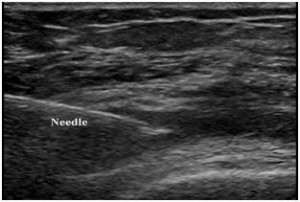Website Update! Please take note…
Portland PRP is part of FoRM Health, a functional and regenerative medicine clinic based in the Sellwood neighborhood of southeast Portland. We are consolidating our websites and as a result all links on this page will take you to the appropriate content on FoRM’s website. Please contact us with any questions, and we look forward to working with you!
Platelet Rich Plasma (PRP)
Orthopedics and dentistry have been the primary areas of application for PRP in the past few years. PRP has positive effects in many different instances of joint, muscle, and tendon injury. Its use is similar to standard prolotherapy (see below), but may be preferred specifically for tendon or muscle tears and some forms of arthritis or joint degeneration. It is also used in dentistry and some surgical procedures to encourage quicker healing. While there are conditions for which surgery is definitely indicated, it can sometimes be avoided or at least delayed with PRP or prolotherapy.
Conditions for which PRP may be indicated:
– Arthritis, cartilage/joint degeneration of the hip, knee, shoulder, spine, and more.
– Lateral/Medial Epicondylosis/itis (Tennis or golfer’s elbow)
– Meniscal injury or tears
– Shoulder injuries, including labral tears and rotator cuff injuries
– Achilles Tendinosis
– Patellar Tendinosis (Jumpers Knee)
– Partial tendon tears
Please view our Resources section for a list of research and articles on PRP.
Prolotherapy
What is Prolotherapy?
Prolotherapy is a regenerative injection therapy (RIT) used to strengthen joints weakened or damaged by over-use or chronic injury. Ligament or tendon attachments once stretched, torn, or otherwise injured often have difficulty returning to pre-injury level of functioning due to limited blood supply to these structures. Surgery can often produce more scarring and limited range of motion without addressing the root cause of dysfunction. Prolotherapy can actually stimulate healing of the joint structures without cutting into, or removing, tissue. While there are conditions for which surgery is definitely indicated, it can sometimes be avoided or at least delayed with prolotherapy.
How Does Prolotherapy Work?
Do have chronic knee pain even following meniscus surgery? Ongoing neck pain after a motor vehicle accident requiring months of physical therapy with minimal improvement? How about cycles of muscles tightness and spasm ever since a shoulder injury, despite lots of massage? Or chronic back pain or disc problems ever since giving birth to your child? All of these scenarios are typical of injuries not healing correctly, leading to instability and weakness around a joint. The result is a pattern of chronic pain, with muscles tightening in attempts to compensate.
When tissues are initially injured, sugars and fats are released at the site to help stimulate the immune system’s repair mechanims. When there is ongoing overuse of an area (such as tennis elbow or achilles tendinosis) the repair process never gets a chance to finish, leading to ongoing breakdown of the tissues. Chronic anti-inflammatory/NSAID use or steroid injections further impair this process. Prolotherapy attempts to reinitiate repair mechanisms at the specific site of injury by injecting dextrose (or other natural stimulants) to the area, creating focalized inflammation and mimicking the original repair process. It stimulates the generation of new fibrous tissue, strengthening tendon and ligament attachments. Once joint structures are strengthened, both joint and muscle pain can be significantly, if not fully eliminated. Degenerative processes, such as those seen in osteoarthritis, can also be stopped, and new cartilage encouraged to regenerate.
MRI and CAT scans are conventionally thought of as the gold standard for diagnosing musculoskeletal conditions such conditions as a torn rotator cuff, nerve entrapment and torn ligaments. These imaging techniques however are very expensive and time consuming. Ultrasound, on the other hand, is done in the office within minutes and is relatively inexpensive. Because it is a motion camera, structures can be viewed in real time. The exact location of dysfunction can easily be assessed allowing for precise treatment. This is particularly valuable when evaluating impingement syndromes, snapping syndromes, joint instability, and muscle and tendon tears that only show up with certain movements. Another advantage of ultrasound is its use for guidance of prolotherapy injections. The ultrasound allows the practitioner to see the needle as it enters the body and allows him to precisely target the area that needs therapy. Ultrasound guided prolotherapy is also less painful for the patient.
Treatment Course
Treatment course varies and depends on the joint being treated, but typically results are seen within three treatments, although often patients will see significant improvement after one visit. A typical treatment course is 3-6 series of injections, given every 2-4 weeks.




